Café and Public Space Opens at Former Bungomori RoundhouseLocal revitalization project in Kusumachi, Oita Prefecture, aims to support employment for persons with disabilities and promote tourism
A ceremony was held on June 10 to mark the opening of a newly completed café-restaurant and multipurpose social space that will employ persons with disabilities next to the former Bungomori Roundhouse, a registered tangible cultural property in Kusumachi, Oita Prefecture. This is part of The Nippon Foundation’s Hataraku NIPPON Project, which promotes employment for persons with disabilities, and is the project’s first activity in Oita Prefecture. The facility is also part of the local government’s Kusumachi Local Revitalization Project.
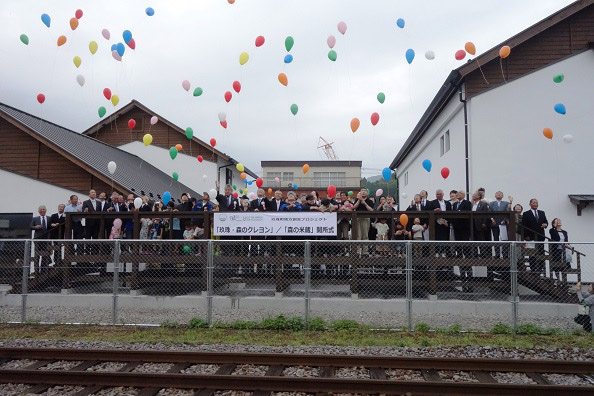
The Nippon Foundation is working with the town of Kusumachi and the NGO Gyouun Fukushi-Kai, which is based in Oita City, to build a new center for tourism and increase the number of visitors using the town’s main tourism resource, the former Bungomori Roundhouse. This will also provide an opportunity to offer employment to persons with disabilities, thereby promoting a better understanding of persons with disabilities.
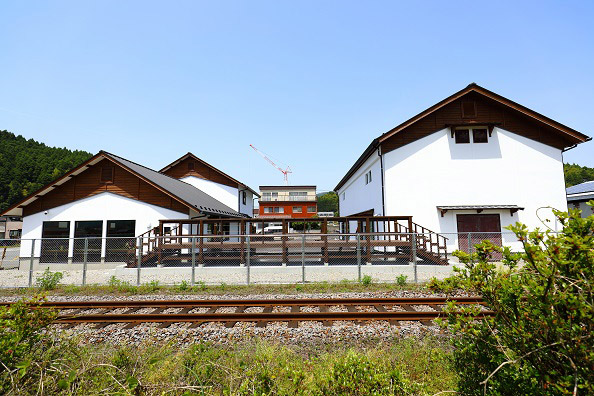
The former Bungomori Roundhouse was completed in 1934 as a yard for steam locomotives, to coincide with the completion of the Kyudai Main Line that connects the cities of Kurume in Fukuoka Prefecture and Oita in Oita Prefecture. This function ended in 1970, when the trains changed to diesel-powered engines that no longer required a roundhouse. The former roundhouse and turntable were named registered tangible cultural properties in 2012, as Kyushu’s only still existing fan-shaped roundhouse. The roundhouse receives roughly 30,000 visitors annually, but most stay for only a short time, and the city has been looking for ways to encourage visitors to stay for a longer time.
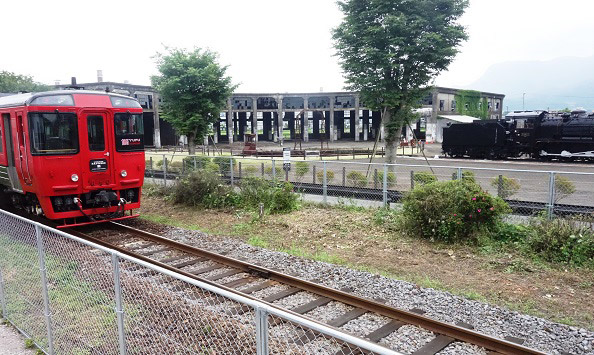
According to Ichijo Niwa, director of Gyouun Fukushi-Kai, the town of Kusumachi was working on a plan to build a park around the former Bungomori Roundhouse, and invited proposals to make use of the site of the former roundhouse, which was owned by the town and had two warehouse-style buildings beyond the railway tracks. Gyouun Fukushi-Kai was given the two buildings for renovation, and the construction costs were covered by a grant from The Nippon Foundation’s Hataraku NIPPON Project and Gyouun Fukushi-Kai’s own funds.
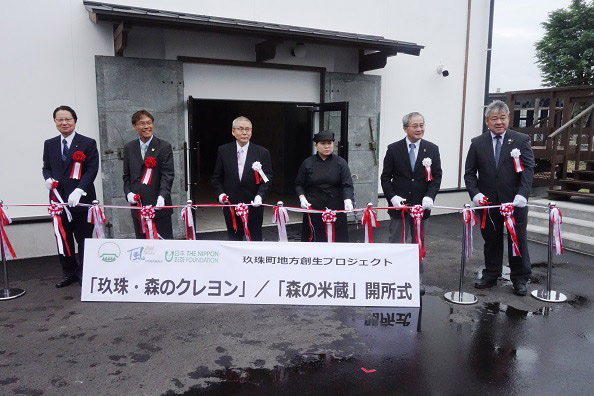
Kusu Mori-no-Crayon, the café-restaurant, serves meals featuring “special A” grade Kusu rice and various locomotive-themed dishes, with the aim of providing a one-of-a-kind experience with locally produced ingredients. With 36 seats, diners can watch passing trains from up close.
The other building is the multipurpose public space Mori-no-Komegura, which holds exhibitions and events as a place for community interaction. The two buildings, which together are referred to as the Wind 2 business, provide “Type A” employment and “transition support for employment,” and the business aims to employ 20 persons in these categories.*
- *Type A employment is defined as “support for continuous employment” under the Services and Supports for Persons with Disabilities Act. This type of employment is intended for people who cannot work in regular employment, and is based on a contract to provide necessary training and support for the person to perform work that they are able to do, providing them with employment opportunities and a chance to be productive, thereby increasing their knowledge and skills. The Act also defines “transition support for employment” as providing persons with disabilities who desire to work with necessary training for improving knowledge and skills needed for them to enter the workforce.
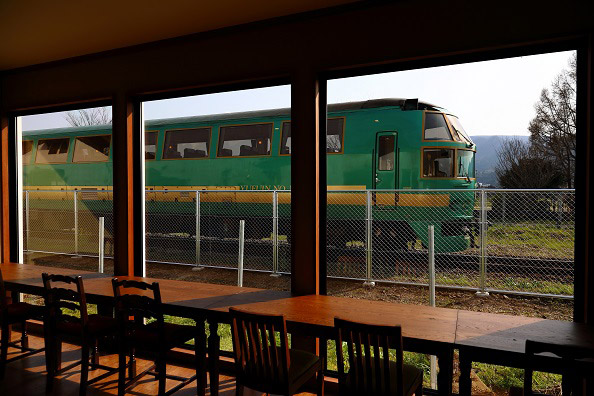
At the opening ceremony, Kusumachi Mayor Masakazu Shukuri explained that there were two buildings – one for milling and one for storing rice – in the southern part of the area, formerly known as Kusumachi Mori, and after the town took over ownership of these buildings, officials thought about ways to make use of them to stimulate tourism. One proposal was to establish a facility where people with disabilities from around the area could come to work. Mr. Shukuri’s predecessor, Kohei Asakura, championed this idea and expressed his hope that they could develop a model that would become a model nationwide.
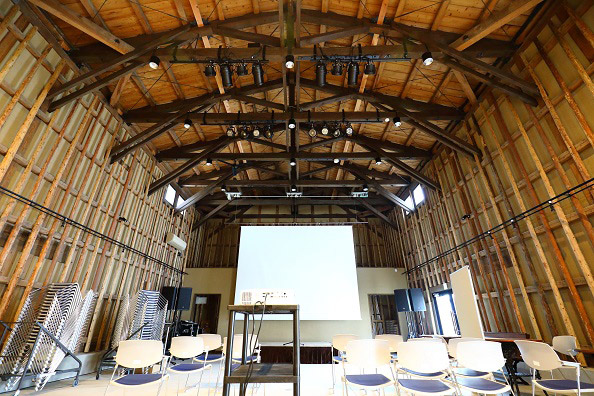
Takeju Ogata, President of The Nippon Foundation, spoke about the resolution and responsibilities that would be needed going forward, noting, “If you have the funds and the energy you can get to this point; the issue now is how to develop and maintain the project going forward. This is a first step, and I hope that you will operate this facility for a long time for the residents of Kusumachi and the people who work here, and that they will be proud of this facility and develop it into a national model.”
Mr. Niwa of Gyouun Fukushi-Kai noted that he looks forward to working together with Kusumachi, The Nippon Foundation, and the people who will work at Wind 2, to build an attractive community and create an implementation model.
Hirose Katsusada, governor of Oita Prefecture, sent a message (that was read by Vice Governor Takashi Ando), in which he expressed his hope that the project would be a success both in terms of providing employment for people with disabilities and in revitalizing the local community. Seishiro Eto, the district’s representative in the House of Representatives and a supporter of the project, also attended the ceremony and added his encouragement.
The operating hours for Kusu Mori-no-Crayon are 10:00 a.m. to 5:00 p.m. for the bakery and 11:00 a.m. to 5:00 p.m. for the café-restaurant. Both are closed on Mondays (except for national holidays) and Tuesdays.
Contact
Communications Department
The Nippon Foundation
- E-mail:cc@ps.nippon-foundation.or.jp



